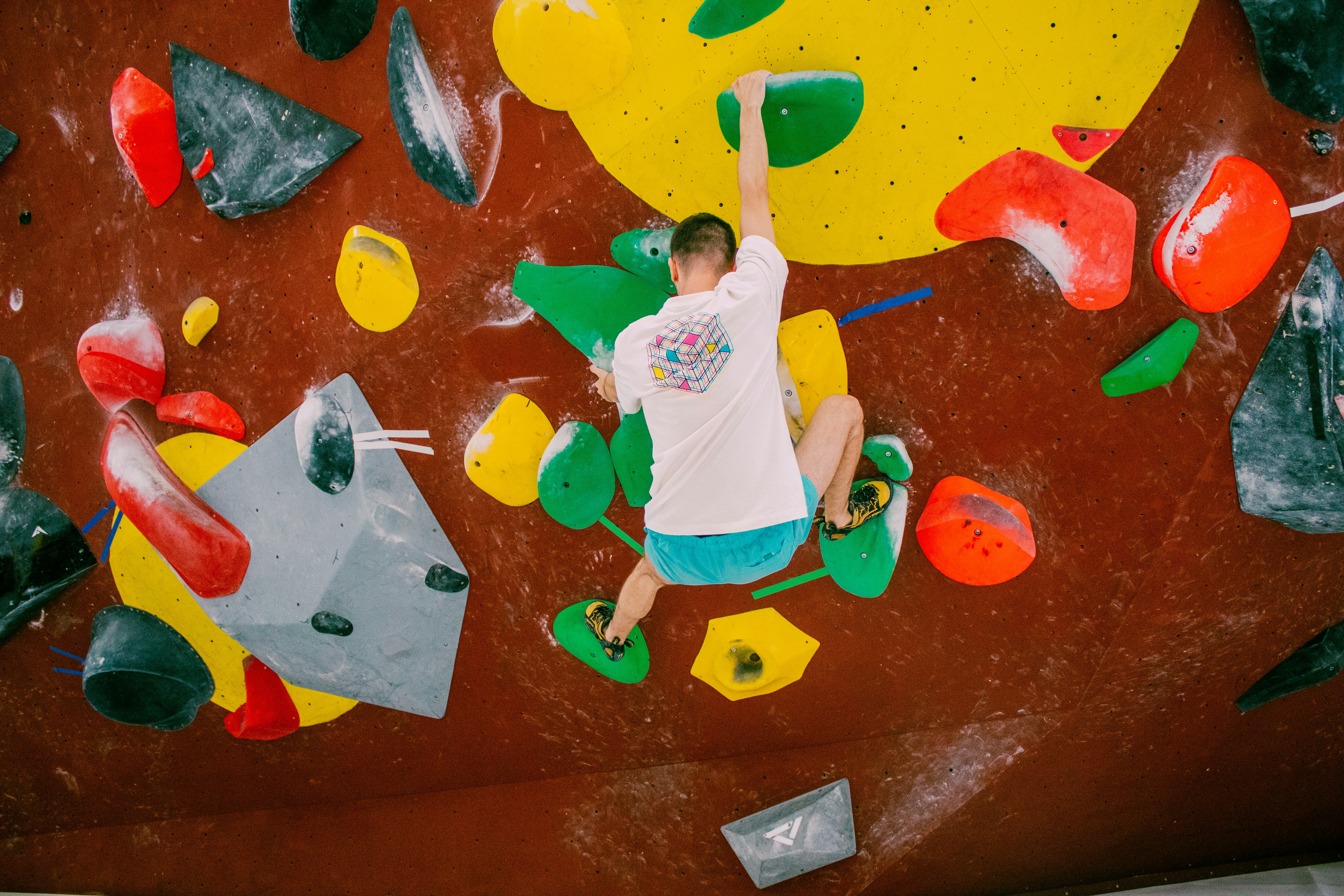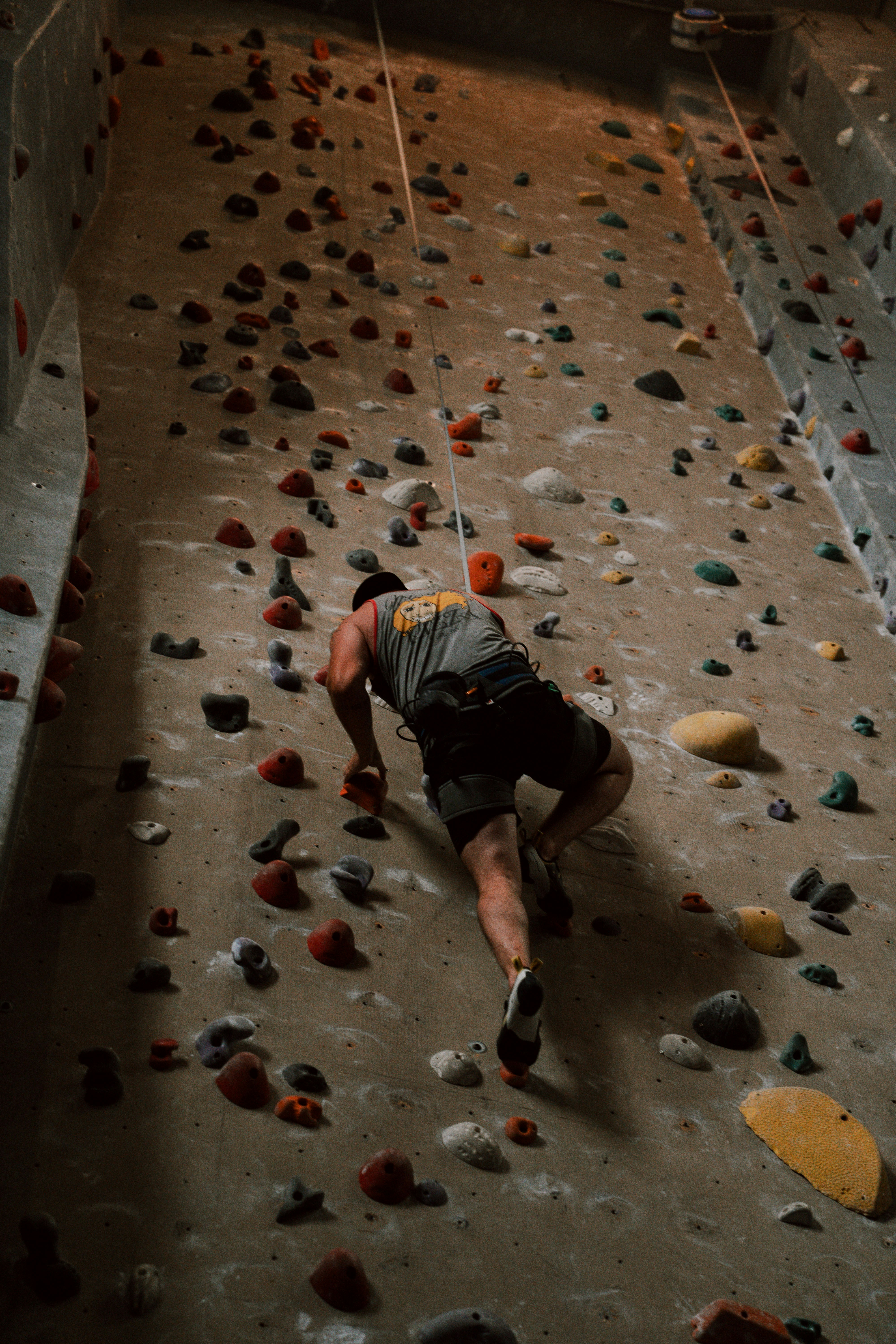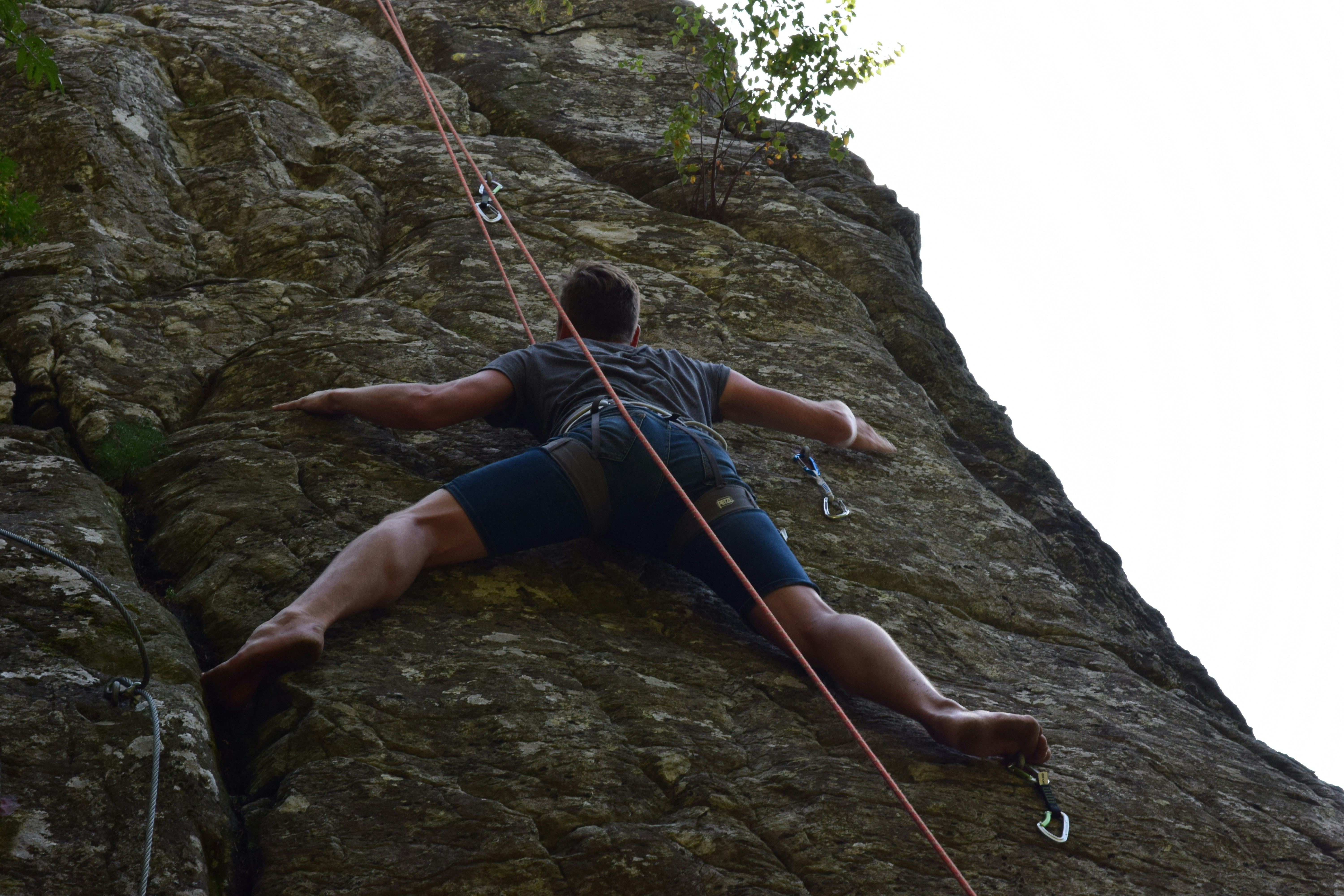You've probably wondered how elite climbers like Janja Garnbret and Sorato Anraku manage to peak perfectly for major competitions while maintaining consistent performance throughout the season. The secret isn't just training hard - it's training smart with proper periodization. As we head into fall, most competitive climbers are asking the same question: how do I structure my training to be at my strongest when competition season arrives?
With the 2025 World Championships in Seoul just wrapping up, we've seen again how proper preparation separates the podium finishers from everyone else. But here's the thing most recreational competitors miss - elite athletes don't train at maximum intensity year-round. They follow structured periodization plans that systematically build toward peak performance at specific times.
Fall training periodization is particularly crucial because it sets the foundation for your entire competitive season. Get it right, and you'll arrive at competitions feeling strong, confident, and ready to perform. Get it wrong, and you might find yourself overtrained, injured, or simply not climbing at your potential when it matters most. The good news? The principles are straightforward once you understand them.
Understanding Training Periodization for Climbers
Periodization is essentially the systematic planning of your training to achieve peak performance at specific times. Instead of training the same way year-round, you deliberately vary the volume, intensity, and focus of your training to create adaptations that build toward your competitive goals. Think of it as a roadmap that guides your training decisions based on where you are in the season and what you're preparing for.
The concept comes from endurance sports and strength athletics, but climbing presents unique challenges for periodization. Unlike runners who primarily develop one energy system, climbers need strength, power, endurance, technique, and mental skills. The trick is developing these qualities in a sequence that allows them to peak simultaneously when you need them most.
Most climbers make the mistake of trying to work on everything at once. They'll do strength training on Monday, technique work on Tuesday, power development on Wednesday, and endurance training on Thursday. While this approach develops all the necessary qualities, it doesn't optimize any of them. Proper periodization focuses your training on specific adaptations during distinct phases, allowing you to make greater gains in each area.
The key insight is that different training adaptations require different amounts of time to develop and maintain. Strength gains take 6-8 weeks to develop significantly but can be maintained with less volume. Power adaptations develop more quickly but also fade faster. Technical improvements require consistent practice but don't create the same fatigue as strength work. Understanding these timelines allows you to sequence your training logically.
Effective periodization also accounts for individual recovery needs and life circumstances. A student might have different seasonal demands than someone working a standard job. Your periodization plan needs to be realistic about your available training time and energy throughout different parts of the year.
Fall Base Building Phase: Foundation for Success
Fall represents the perfect time for base building - developing the fundamental fitness and movement quality that will support your peak season performance. This phase typically runs from September through November, depending on when your competition season begins. The goal isn't to climb as hard as possible, but to systematically build the capacity for harder training later.
Base building for climbers involves developing aerobic capacity, movement efficiency, basic strength, and technical consistency. This might seem boring compared to limit bouldering and campus board sessions, but it's during base phases that you develop the work capacity to handle high-intensity training without getting injured or overtrained.
Aerobic base building for climbers looks different than it does for runners or cyclists. Instead of long, steady cardio sessions, focus on higher-volume climbing at moderate intensities. This means climbing more routes or problems, but at grades well below your limit. The goal is to improve your body's ability to recover between efforts and clear lactate efficiently during rest periods.
Technical focus becomes especially important during base phases because you have the mental energy to concentrate on movement quality without the pressure of performing at your limit. This is when you work on footwork precision, body positioning, efficiency of movement, and route reading skills. These improvements will pay dividends when you're climbing harder grades later in the cycle.
Strength training during base building emphasizes higher volumes at moderate intensities rather than maximum loads. Think pull-ups, push-ups, and core work rather than one-rep-max hangs. The goal is building work capacity and movement quality in strength exercises, not demonstrating maximum force production.
The psychological benefits of base building are often overlooked but equally important. This phase allows you to rebuild motivation and enthusiasm after any previous competitive disappointments. It's also when you can experiment with new training methods or techniques without the pressure of immediate performance demands.
Strength Development Phase: Building Your Foundation
Once you've established a solid base, typically after 6-8 weeks of base building, you transition into focused strength development. This phase usually runs from late November through January and represents the most demanding period of your training cycle. The goal is building maximum strength in movements and positions specific to climbing performance.
Strength development for climbers centers on isometric holds and pulling strength, but it's more nuanced than just hanging from small holds. You need to develop strength across the full range of climbing positions - from steep overhangs to vertical walls, from crimpy problems to slopers, from static positions to dynamic movements.
Hangboard training becomes a primary focus during this phase, but effective hangboard protocols require systematic progression. Start with holds you can maintain for 10-12 seconds and gradually progress to smaller holds or added weight. The key is consistent overload over time, not immediately jumping to your minimum edge or maximum weight.
Campus board training offers another powerful tool for strength development, but it's not appropriate for all climbers. If you can climb V6/7A consistently and have been climbing for at least two years, campus training can develop upper body power effectively. However, the injury risk is significant, so proper progression and technique are non-negotiable.
Pull-up variations become essential during strength phases. Standard pull-ups, weighted pull-ups, L-sits, and uneven pull-ups all contribute to pulling strength development. The key is progressive overload - gradually increasing resistance, holds times, or movement difficulty over the course of the phase.
Antagonist training becomes crucial during high-intensity strength phases to prevent injury and maintain balance. This includes pushing exercises, shoulder stability work, and posterior chain strengthening. Many climbers skip this work because it doesn't directly improve climbing performance, but it's essential for staying healthy during demanding training periods.
Core strength training during this phase focuses on isometric holds and anti-extension work rather than dynamic movements. Planks, side planks, hollow body holds, and dead bugs build the stability necessary for efficient movement on overhanging terrain. The goal is developing strength in positions that directly transfer to climbing movements.
Power and Peak Phase: Bringing It All Together
The power and peak phase typically begins 6-8 weeks before your first major competition and represents the culmination of your periodized training plan. During this phase, you transition from developing maximum strength to expressing that strength powerfully and specifically for competition climbing.
Power development requires training at higher intensities with full recovery between efforts. This means limit bouldering, campus board power training, and plyometric exercises. The volume decreases significantly compared to previous phases, but the intensity and specificity increase dramatically.
Limit bouldering becomes your primary climbing focus during power phases. This means working problems at or slightly above your current maximum grade, with full recovery between attempts. The goal isn't volume - you might only complete a few problems per session - but quality of effort and movement.
Competition-specific training becomes essential during peak phases. This means practicing in competition formats, working with time pressure, and simulating the mental demands of competitive climbing. If you compete primarily in bouldering, structure your sessions like competitions with preview time and limited attempts.
Technical refinement continues during power phases, but the focus shifts to executing technique under pressure rather than learning new movement patterns. This is when you practice climbing efficiently when you're pumped, maintaining composure when you're nervous, and reading routes quickly and accurately.
The taper period immediately before competitions requires careful balance between maintaining fitness and arriving fresh for competition. Generally, this means reducing volume by 40-50% while maintaining some intensity work to stay sharp. The exact taper length depends on your training history and recovery needs, but 7-10 days works well for most climbers.
Mental preparation becomes increasingly important as you approach competitions. This includes visualization practice, developing pre-competition routines, and practicing pressure management techniques. The goal is arriving at competitions with not just physical readiness but mental confidence and clarity.
Periodization for Different Climbing Disciplines
Each climbing discipline requires slightly different periodization approaches because the physiological and technical demands vary significantly. Understanding these differences allows you to tailor your training plan to your specific competitive focus.
Bouldering periodization emphasizes power development and movement complexity over endurance capacity. The base phase includes higher-volume bouldering at moderate grades, the strength phase focuses heavily on campus training and limit hangs, and the power phase centers on limit bouldering and dynamic movement training.
Lead climbing periodization requires greater emphasis on endurance capacity and pump tolerance. Base building includes higher-volume route climbing, strength development incorporates more endurance-strength protocols, and the power phase balances limit climbing with competition-length route practice.
Speed climbing requires a completely different approach focused on explosive power and movement specificity. The base phase emphasizes general athleticism and movement efficiency on the speed wall, strength development focuses on explosive pulling power, and the peak phase is almost entirely speed-specific training.
If you compete in combined formats or multiple disciplines, periodization becomes more complex. The key is identifying which discipline requires the longest development time and structuring your training around that constraint while maintaining basic capacity in other areas.
Youth climbers need modified periodization approaches that account for natural development patterns and reduced recovery capacity. Generally, this means shorter training cycles, greater emphasis on technique development, and more conservative strength training protocols.
Common Periodization Mistakes and How to Avoid Them
The most common periodization mistake is trying to maintain peak fitness year-round. This leads to stagnation, overtraining, and increased injury risk. Accept that you can't be at your absolute best all the time - strategic periods of reduced performance allow for greater peaks when they matter most.
Another frequent error is insufficient base building. Many climbers want to jump directly to high-intensity training because it feels more specific and challenging. However, skipping proper base building limits your capacity for higher-intensity work later and increases injury risk significantly.
Poor transition between training phases creates confusion and suboptimal adaptations. Each phase should build logically on the previous one, with clear changes in focus and methodology. Gradual transitions work better than abrupt changes that shock your system.
Ignoring individual recovery needs leads to overtraining and burnout. Some athletes need more recovery than others, and this doesn't indicate weakness or lack of commitment. Monitor your response to training carefully and adjust volume and intensity based on how you're actually adapting.
Inadequate planning for life stress and schedule changes derails many periodization attempts. Work demands, travel, illness, and other life factors affect your training capacity. Build flexibility into your periodization plan and have backup strategies for when life interferes with training.
Neglecting technique development during strength phases is a missed opportunity. Strength phases often provide the best opportunity for technical work because you're not constantly fatigued from high-volume climbing. Use this time to refine movement patterns that will improve once your strength peaks.
Monitoring Progress and Adjusting Your Plan
Effective periodization requires systematic monitoring of your progress and response to training. This doesn't mean obsessive data tracking, but it does mean paying attention to key indicators that inform training adjustments.
Climbing performance metrics provide the most direct feedback about your training effectiveness. Track your performance on standardized problems or routes every few weeks. Improvement should be gradual but consistent within each phase, with more significant jumps when transitioning between phases.
Subjective recovery indicators often provide earlier warning signs than performance metrics. Monitor your sleep quality, motivation levels, appetite, and general energy throughout each training phase. Declining scores in multiple areas suggest you need additional recovery or reduced training load.
Objective recovery metrics like heart rate variability or resting heart rate can provide additional insight, especially for athletes prone to overtraining. However, don't rely solely on technology - learn to read your body's signals and trust your subjective assessment of readiness.
Training load documentation helps you understand what works and what doesn't over multiple training cycles. Track the volume and intensity of your climbing and strength training, along with any modifications you make to your planned program. This creates a database for future periodization planning.
Regular testing sessions provide objective feedback about specific training adaptations. This might include maximum hangs, pull-up tests, or performance on benchmark problems. Schedule these tests at consistent intervals to track progress within and between training phases.
Flexibility in your periodization plan is essential because no plan survives contact with reality unchanged. Be prepared to extend phases that are working well, modify phases that aren't producing expected adaptations, and adjust timelines based on competition schedules or life circumstances.
Putting It All Together: Your Fall Training Template
Creating your personalized fall training plan starts with identifying your competition schedule and working backward to determine phase timing. If your first major competition is in March, your peak phase should begin in late January, strength development in November, and base building in September.
Week 1-8 (September-October): Base Building Phase. Focus on volume climbing at 70-80% of your maximum grade, basic strength training with higher repetitions, technical skill development, and aerobic capacity building. Training frequency should be 4-5 days per week with moderate intensity.
Week 9-16 (November-December): Strength Development Phase. Introduce hangboard training, increase strength training intensity, maintain moderate climbing volume but with more challenging grades. Training frequency remains consistent but intensity increases significantly.
Week 17-22 (January-February): Power and Peak Phase. Limit bouldering becomes primary focus, campus board power training, competition simulation, and technical refinement under pressure. Volume decreases but specificity and intensity reach their highest levels.
Week 23-24 (Late February): Taper Phase. Reduce volume by 40-50%, maintain some intensity work, focus on mental preparation and recovery. The goal is arriving at competition fresh but maintaining fitness.
Individual modifications should account for your experience level, injury history, available training time, and specific competitive goals. Beginners need longer base phases and more conservative strength progression. Experienced competitors can handle more aggressive periodization and higher training loads.
Recovery protocols become increasingly important as training intensity increases. This includes proper sleep, nutrition, stress management, and active recovery activities. Plan recovery weeks every 3-4 weeks during high-intensity phases to prevent overreaching.
Making Periodization Work for Real Life
The biggest challenge with periodization isn't understanding the theory - it's implementing it consistently despite work, family, travel, and other life demands. Successful long-term periodization requires building flexibility into your plan while maintaining the core principles.
Start with a realistic assessment of your available training time and energy throughout the year. If you can only train three days per week, your periodization plan must account for this constraint. Better to follow a conservative plan consistently than to attempt an aggressive plan that you can't maintain.
Identify your non-negotiable training elements and build your periodization around these core activities. This might be two climbing sessions per week plus one strength session. Additional training can be added when time allows, but these core elements form the foundation of your plan.
Build buffer time into your periodization schedule to account for illness, travel, work demands, or other interruptions. If your competition is in 20 weeks, plan your training as if you only have 18 weeks available. This prevents panic and poor decisions when life interferes with training.
Develop simplified backup plans for busy periods. This might mean bodyweight exercises instead of gym strength training, shorter climbing sessions focused on quality over quantity, or home hangboard sessions when you can't get to the climbing gym.
Remember that consistency trumps perfection in periodization. Following a simple plan consistently produces better results than attempting a complex plan that you can't maintain. Start with basic periodization principles and add complexity as you gain experience and confidence.
The goal of fall periodization isn't just preparing for competition season - it's developing a systematic approach to training that you can refine and improve over multiple years. Each training cycle teaches you something about your response to different training stimuli, your recovery needs, and your competition preparation preferences.
Done correctly, periodized training transforms climbing from random gym sessions into a purposeful journey toward your climbing goals. You'll arrive at competitions knowing you've prepared systematically and thoroughly, which creates confidence that no amount of last-minute training can match.
Start your fall periodization plan now, be patient with the process, and trust that systematic preparation creates the foundation for breakthrough performances when they matter most. Your future competitive self will thank you for the discipline you show during these less glamorous training phases.


